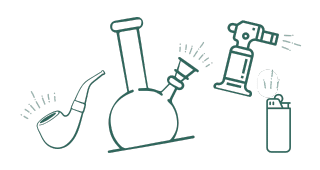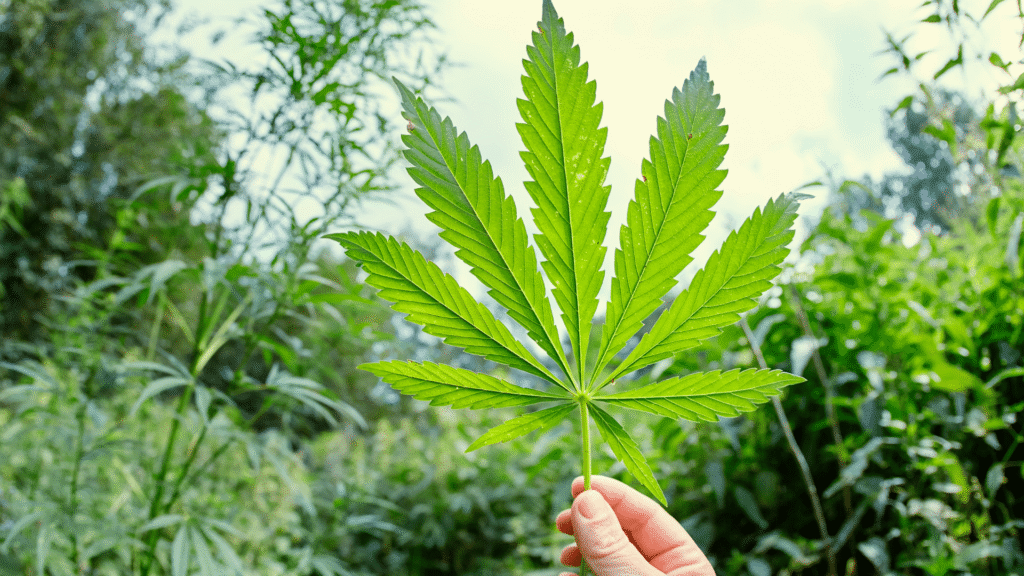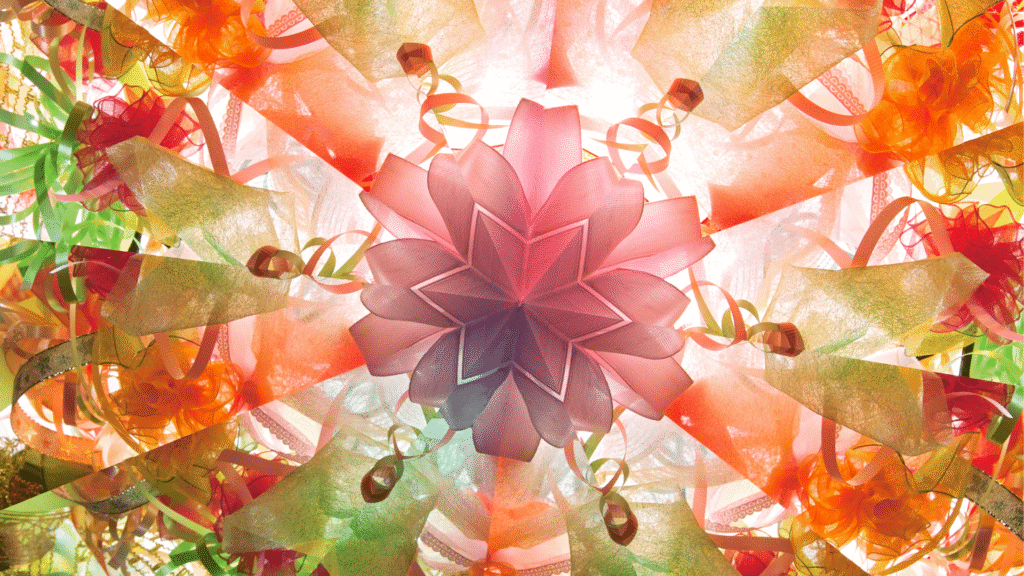With cannabis legality becoming more prevalent in states across the U.S., our access to different strains, brands, and product types continues to increase. Having such a varied array of choices also gives us options for delivery method: inhalation (smoking and vaping), oral (edibles and tinctures), and topical (lotions and balms). While smoking marijuana has a long history as the primary consumption method, things changed when vaping technology hit the mass market. Along with its surge in popularity came media campaigns touting the health dangers, so the question arose: between smoking and vaping, which is better for you?
What It Means: Smoking vs. Vaping Cannabis
The debate of consumption method first starts with the different types of cannabis: flower vs. oil.
Marijuana Flower, or bud, refers to the smokable trichome-covered part of a female cannabis plant. Flower can be smoked in a pipe, bong, joint, or blunt, and combustion occurs at the high temperatures from the flame.
Oils are concentrates created by extracting cannabinoids (compounds) from the cannabis plant. A solvent is used for the extraction, and a carrier oil, such as hemp or MCT, is added.
With a device like pen vapes, portable vaporizers, or desktop vaporizers, the concentrates get heated to a temperature below the point of combustion, and the cannabis compounds become vaporized.
The Benefits of Vaping Cannabis
Though vaping remains a controversial topic, it offers certain indisputable benefits.
- Vaping is more discreet.
Vaping produces a much more subtle aroma than combusted cannabis, with no ash to dispose of, and vape pens are more convenient to tote around than a pipe or bowl.
- Vaping optimizes potency.
Vaping has been shown to have a more potent effect on consumers, as evidenced by one study at Johns Hopkins, which concluded that participants felt the effects more intensely from vaping at every dose administered. Another study from the Journal of the American Medical Association concluded that vaping is a more efficient delivery system for THC.
- Vaping preserves terpenes.
Terpenes, naturally-occurring compounds that give cannabis strains their aromas and flavors, are heat-sensitive. Since vaping heats cannabis to a point below combustion, the terpenes remain intact – which is also good news because they work synergistically with other cannabinoids to give consumers the full effect of the cannabis plant.
The Benefits of Smoking Cannabis
The classic consumption method offers distinct perks of its own.
- Smoking allows for easier dosing than vaping.
When smoking flower, consumers can more easily keep tabs on the amount of cannabis they’re inhaling, versus vaping, where they’re unable to see the product itself and may be unaware of how much they’re actually taking in.
- Less/ no chance of buying toxic, black market products.
Since flower doesn’t need to undergo the extraction process, there’s little to no chance of toxic chemicals infiltrating the product.
The Risks of Smoking vs. Vaping Cannabis
The general belief of vaping as a safer alternative to smoking may have certain merit, but also raises significant concerns.
- Vaping affects lung health.
While more research has been conducted about the effects of e-cigarettes and vaping nicotine, as opposed to THC, data shows the negative impact on lung health, with reports of vaping-related illnesses and injuries.
- Vaping may contain potentially harmful ingredients.
EVALI (e-cigarette or vaping use-associated lung injury) has been associated with consumers who utilize black market vape products or modify their devices. Michael Blaha, M.D., M.P.H., director of clinical research at Johns Hopkins Ciccarone Center for the Prevention of Heart Disease, says, “This is especially true for vaping products containing THC.” Vitamin E acetate, a thickening agent, is often found in THC vape products, and has been referred to as a “very strong culprit” in lung injuries. Garden Remedies uses only pure, uncut cannabis oil using CO2 and Ethanol extraction in its vaporizer products.
- Vaping is not highly regulated.
With rules concerning cannabis legislation varying from state to state, a lack of uniformity in the industry means that vaping products aren’t as tightly regulated as they should be.
Though smoking flower isn’t linked to EVALI, the issue with smoking seems to be the actual smoke itself.
- Smoking may release carcinogens.
According to the CDC, smoking cannabis produces some of the same carcinogens as smoking tobacco, but more studies are needed to definitively determine whether cannabis increases lung cancer risk. Also, it’s thought that cannabis smokers could have more exposure to tar compared to cigarette smokers, because they inhale longer.
- Smoking may cause breathing and respiratory issues.
One study concluded that consumers who smoked flower reported an improvement in their breathing after switching to vaping.
- Smoke may not be as “clean” as vapor.
Another analysis suggested that vaporization effectively delivered cannabinoids without harmful smoke compounds, indicating that vapor is a cleaner option compared to smoke and combustion.
While smoking and vaping each have their own benefits, knowing the risks associated with both methods will help guide the best decision for you and your lifestyle.
Biography:
Kimberly Tronic is an author, copywriter and content creator. She enjoys coffee, cleaning her apartment, cats, and nibbling on pencils.
References:
- https://www.livescience.com/64202-vaped-weed-gets-you-higher-than-smoking.html
- https://jamanetwork.com/journals/jamanetworkopen/fullarticle/2716990
- https://www.nytimes.com/2019/10/10/health/vaping-illnesses-cdc.html
- https://www.cdc.gov/cannabis/health-effects/cancer.html
- https://www.lung.org/quit-smoking/smoking-facts/health-effects/marijuana-and-lung-health
- https://harmreductionjournal.biomedcentral.com/track/pdf/10.1186/1477-7517-4-11.pdf














